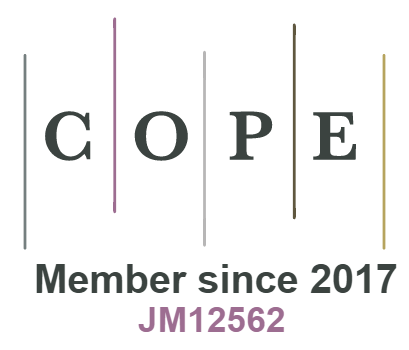Implications of Industrialized Building System on Labor Demand and Cost
DOI:
https://doi.org/10.18034/ei.v6i2.227Keywords:
IBS, Labor, DEA, Construction IndustryAbstract
High dependence on foreign workers in the construction industry has been long known to be one of the contributing factors of labor demand issue. To address this problem, the implementation of new technology innovations, such as the Industrialized Building System (IBS) is suggested. The purpose of this research paper is to identify the implication of IBS on the labor requirement of the construction industry. In this paper, the authors used the survey-questionnaire method. The research involved data from the surveys completed by the contractors registered with the CIDB. Data Envelopment Analysis (DEA) has been applied, and the reliability of the DEA result has also been proved. The result obtained from the Data Envelopment Analysis (DEA), indicates that IBS contractors are still required to hire an unskilled worker to undergo the new technology transition. However, when the adoption rate of IBS gets higher, the issue of substantial influx and dependency on a foreign worker in the construction industry can be resolved gradually. Although the investment cost is high during the initial stage, IBS can help to reduce the construction cost in the long-term.
Downloads
References
Adikaram, K. et al. (2014) ‘Outlier detection method in linear regression based on sum of arithmetic progression’, The Scientific World Journal. Hindawi, 2014.
Alinaitwe, H. M., Mwakali, J. and Hansson, B. (2006) ‘Assessing the degree of industrialisation in construction–a case of Uganda’, Journal of Civil Engineering and Management. Taylor & Francis, 12(3), pp. 221–229.
Arif, F., Lodi, S. H. and Azhar, N. (2015) ‘Factors influencing accuracy of construction project cost estimates in Pakistan: Perception and reality’, International Journal of Construction Management. Taylor & Francis, 15(1), pp. 59–70.
Bakker, M. and Wicherts, J. M. (2014) ‘Outlier removal, sum scores, and the inflation of the type I error rate in independent samples t tests: The power of alternatives and recommendations.’, Psychological methods. American Psychological Association, 19(3), p. 409.
Barnett, V., Lewis, T. and Pincus, R. (1995) ‘Outliers in Statistical Data. 3rd edition. J. Wiley & Sons 1994, XVII. 582 pp., £49.95’, Biometrical Journal, 37(2), p. 256. doi: 10.1002/bimj.4710370219.
Beckman, R. J. and Cook, R. D. (1983) ‘Outlier … … …. s’, Technometrics. Taylor & Francis, 25(2), pp. 119–149. doi: 10.1080/00401706.1983.10487840.
Berkane, M. and Bentler, P. M. (1988) ‘Estimation of Contamination Parameters and Identification of Outliers in Multivariate Data’, Sociological Methods & Research, 17(1), pp. 55–64. doi: 10.1177/0049124188017001003.
Cheema, J. R. (2014) ‘Some general guidelines for choosing missing data handling methods in educational research’, Journal of Modern Applied Statistical Methods, 13(2), p. 3.
Cook, R. D. (1986) ‘Assessment of Local Influence (with Discussion)’, Journal of the Royal Statistical Society B, 48(2), pp. 133–169. Available at: http://links.jstor.org/sici?sici=0035-9246%281986%2948%3A2%3C133%3AAOLI%3E2.0.CO%3B2-E.
Devi, S. and Kalia, D. A. (2015) ‘Study of data cleaning & comparison of data cleaning tools’, International Journal of Computer Science and Mobile Computing, 4(3), pp. 360–370.
EPU, E. P. U. (2015) ‘The 11th Malaysia plan (2016–2020)’, in Percetakan Nasional Malaysia Berhad, Kuala Lumpur, 2015.
Ertugrul, I. et al. (2016) ‘Efficiency analysis of non-life insurance companies in terms of underwriting process with data envelopment analysis’, European Scientific Journal, ESJ, 12(10).
Gnanadesikan, R. (2011) Methods for statistical data analysis of multivariate observations. John Wiley & Sons.
Greene, W. H. (2003) Econometric analysis. Pearson Education India.
Hamid, A. R. A., Singh, B. and Mazlan, M. S. (2013) ‘The construction labour shortage in Johor Bahru, Malaysia’, International Journal of research in engineering and technology, 2(10), pp. 508–512.
Hanrui, B. A. O. and Xun, A. N. (2011) ‘Reliability test on oil field efficiency with DEA’, Energy Procedia. Elsevier, 5, pp. 1473–1477.
Jarkas, A. M. and Bitar, C. G. (2011) ‘Factors affecting construction labor productivity in Kuwait’, Journal of construction engineering and management. American Society of Civil Engineers, 138(7), pp. 811–820.
Jarkas, A. M. and Younes, J. H. (2014) ‘Principle factors contributing to construction delays in the State of Qatar’, International Journal of Construction Project Management. Nova Science Publishers, Inc., 6(1), p. 39.
Jarrell, M. G. (1991) ‘Multivariate Outliers. Review of the Literature.’ ERIC.
Kang, H. (2013) ‘The prevention and handling of the missing data’, Korean journal of anesthesiology, 64(5), pp. 402–406.
Liao, H., Li, Y. and Brooks, G. (2016) ‘Outlier impact and accommodation methods: Multiple comparisons of Type I error rates’, Journal of Modern Applied Statistical Methods, 15(1), p. 23.
Molinari, F. (2010) ‘Missing treatments’, Journal of Business & Economic Statistics. Taylor & Francis, 28(1), pp. 82–95.
Navamukundan, A. (2002) ‘Labour Migration in Malaysia-trade union views’, Migrant Workers Labour Education, 4(129), pp. 110–115.
Oliewy, M. Q., Mustapha, K. N. and Mohammad, B. S. (2009) ‘Advantages of industrialized building system in Malaysia’, in proceedings of Student Conference on Research and Development (SCOReD).Malaysia.
Patel, S. (2012) ‘Requirement to cleanse DATA in ETL process and Why is data cleansing in Business Application?’, International Journal of Engineering Research and Applications (IJERA), 2(3), pp. 840–842.
Qin, B. et al. (2009) ‘A rule-based classification algorithm for uncertain data’, in Data Engineering, 2009. ICDE’09. IEEE 25th International Conference on. IEEE, pp. 1633–1640.
Rousseeuw, P. J. and Van Zomeren, B. C. (1990) ‘Unmasking multivariate outliers and leverage points’, Journal of the American Statistical association. Taylor & Francis, 85(411), pp. 633–639.
Zaki, S., Mohamed, S. and Yusof, Z. (2012) ‘Construction skilled labour shortage–the challenges in malaysian construction sector’, International Journal of Sustainable Development, 4(5), pp. 99–108.
--0--
Published
Issue
Section
License
Engineering International is an Open Access journal. Authors who publish with this journal agree to the following terms:
- Authors retain copyright and grant the journal the right of first publication with the work simultaneously licensed under a CC BY-NC 4.0 International License that allows others to share the work with an acknowledgment of the work's authorship and initial publication in this journal.
- Authors are able to enter into separate, additional contractual arrangements for the non-exclusive distribution of the journal's published version of their work (e.g., post it to an institutional repository or publish it in a book), with an acknowledgment of its initial publication in this journal. We require authors to inform us of any instances of re-publication.









